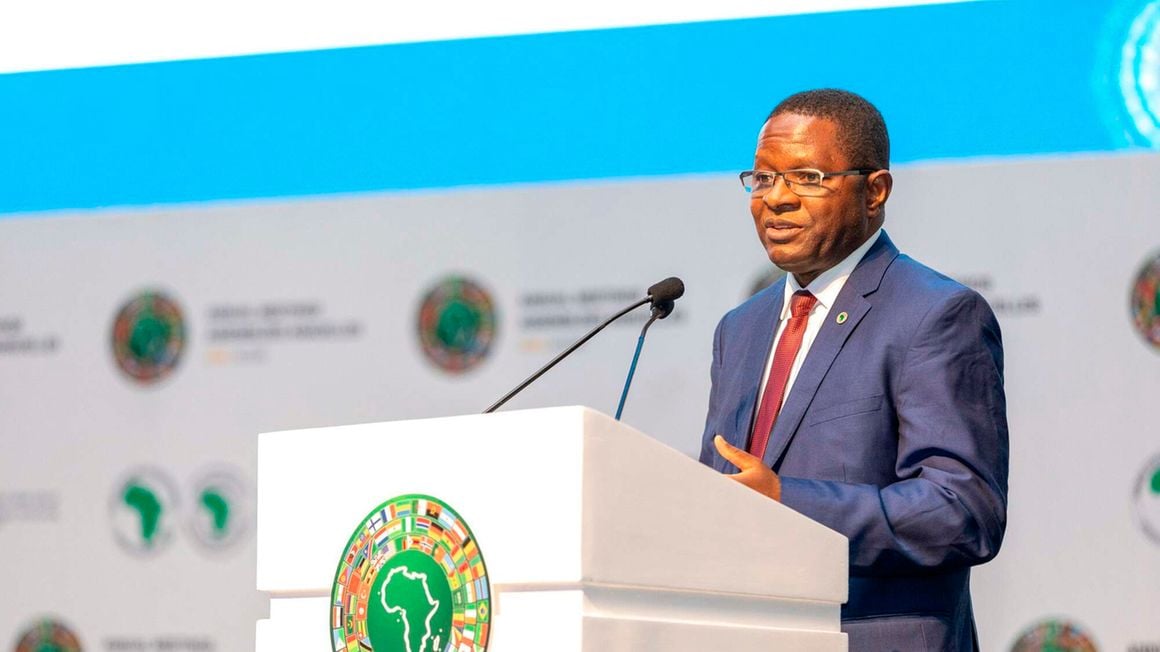
The acting chief economist for the African Development Bank Kevin C. Urama. PHOTO | COURTESY

The acting chief economist for the African Development Bank Kevin C. Urama spoke with Aggrey Mutambo on Africa’s quest for a green revolution and the attendant financial challenges.
After CoP27, there was a pledge by richer countries to compensate for losses caused by climate change. How useful is that for Africa?
Climate change is a global challenge. So, the discussion around loss and damage is built around common but differentiated responsibilities for addressing the impacts of climate change on economies, societies and on people. But there remains the formula on how to quantify loss and damage, and how to apportion the responsibilities for payments - where the funding is to come from? Who pays and who receives the money.
African countries expect that money will flow their way, but how should such funding be structured?
This is in terms of how that flow of resources will be managed because we see that the climate finance architecture has had flaws. Discussions around climate finance saw commitments by the developed countries to spend at least $100 billion on climate action annually. But it has not materialised for several reasons.
One is the structure of the financing architecture itself, which is modelled around Global Financing, meaning the riskier your environment, the less capacity a country has, and the less the likelihood that it will receive financing. And that means that Africa, and especially countries that are more vulnerable to climate change, will not attract finance.
We have also shown, in the African Economic Outlook Report of the African Development Bank Group, that because of this misalignment in terms of the structure of climate finance, the scale of climate finance coming into Africa is far below what the continent needs. Africa needs up to $1.6 trillion to fund the nationally determined contributions (NDC). And if you consider the long-term plans, up to $3 trillion is required by 2030.
How will these losses be determined?
Determining what is the scale of loss and size of financing needed is crucial. There is a lot of research, financial modelling required to determine the appropriation of the loss and damage fund to the countries.
Also, the type of funding in the climate finance architecture. Do the financial instruments increase debt vulnerability of countries already impacted by climate change? Are potential recipients already fiscally challenged?
How useful is debt swapping for climate adaptation in Africa?
Generally, it is not just climate-related funding that has flaws that need to be addressed. Because it appears to be so focused on the debtors. There is opacity in the relationship between creditors and debtors. Climate change is caused by the actions of every individual around the world. And we know that Africa has not caused much of it. Africa has only about 3 percent of CO2 emissions, historically, and still remains below 4 percent. Africa is 17 percent, of the global planet, and has not contributed that much to climate change. Contributions to emissions correlate with economic growth.
The more advanced countries have no doubt contributed disproportionately more in terms of pollution and greenhouse gas emissions, which impact the climate. Basically, pollution has created the problem and has in fact benefited their economies. So, they make money, because they have polluted the planet more.
It is paradoxical to ask those who are victims of the impacts of global warming to borrow financial resources to address the physical impacts of climate change caused by countries that used up the climate budget.
All countries, rich and poor have polluted the planet, but largely, advanced economies are the ones driving SUVs, own industries and benefiting from it. So, a progressive system that has that differentiated responsibility should mean that the rich should pay more for addressing climate change impacts.
African climate change enthusiasts talk of non-financial challenges, such as intellectual property rights and trade barriers. How do these affect transitioning to clean energy?
Trade is always an engine of growth in this current market economies. The nature of the trade that we have now also encourages the flow of raw materials with very low value added to the global North. Also, the price of the raw materials marketed by Africans in the global market is volatile, making it difficult for African governments to plan.
Second, the real price of all those resources has been going down since 1960. Once you deflate that by the inflationary rate of the dollar, what you are actually getting is selling more of your raw material for less. It means you are poorer despite your increased access to raw materials. In economics, rent goes to technology owners.
Without knowledge and capacity development Africans will not have urgency to develop. We rely on knowledge produced outside. In knowledge dependency, what works in Nigeria may not work in Kenya and vice versa.
So, for the Kenyan economy to grow, Kenyans must seek homegrown solutions, cognisant of the culture, politics, sociology and natural resources of Kenya rather than copy technologies that worked elsewhere.
Quite simply, economics is the science of society. It is about a theory of exchange, how people relate with different markets.




No comments :
Post a Comment